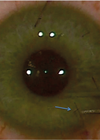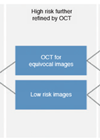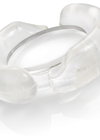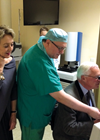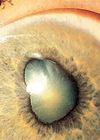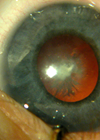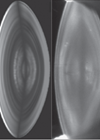Ophthalmology
Advances in cataract surgery
This article covers recent clinical findings in mydriasis and anaesthesia for cataract surgery, shared by Sathish Srinivasan and Keith Davey at a surgical meeting in Manchester. Towards dropless cataract surgery Day case cataract surgery is the standard of care in...
Refraction planning in cataract: avoid creating an unhappy patient
“It is much more important to know what sort of a patient has a disease than what sort of a disease a patient has.” William Osler The focus of this paper is the prevention of an unhappy patient following cataract...
Troubleshooting in LASIK
Contemporary laser in situ keratomileusis (LASIK) is safe and effective. It remains the dominant intervention in routine refractive surgery for a good reason: predictable results, rapid visual recovery, and relatively simple strategies for revision treatment. Over 95% of patients are...
‘The Way Forward’ champions clinicians as architects of patient-centred service redesign
The demographic time bomb poses the dilemma of how more healthcare can be delivered to the UK’s ageing population without commensurate growth in resources. The Way Forward Project provides a robust resource for clinical centres to better identify and implement...
Intraocular lens technology to deliver enhanced optical performance after cataract refractive surgery
Modern cataract surgery aims to provide patients with the best possible visual outcome with the least dependence on spectacles and minimal or no complications and to treat both cataract and refractive errors with a single procedure. Phacoemulsification is the standard...
The David J Apple International Laboratory for Ocular Pathology – a legacy of pioneering IOL research
David Apple and Gerd Auffarth. The Apple Lab at the David J Apple Center for Vision Research in Heidelberg is a thriving international laboratory for research into intraocular devices. The lab continues the work of David J Apple, a world-renowned...
Surgical options for the treatment of hyperopia
The modern refractive surgeon has a variety of options available to treat patients with hyperopia who wish to be independent of spectacles and contact lenses. Unlike in low myopia where presbyopic patients may have the ability to see well for...
Principles of management
Whatever section of pathology is to blame and wherever it strikes, the aim of treatment is always the same. Find the cause if you can. Establish the effects of the cause. Halt the pathological process if you can. Reverse its...
A revolution in modern genetic testing for the clinical management of ocular disease
Recent years have seen a huge increase in our understanding of the genetic factors underlying a wide variety of eye diseases. This has included common conditions such as glaucoma and age-related macular degeneration, as well as those conditions which have...
The refractive index in the eye lens – implications for clinical practice and optical design
The eye may appear to be a comparatively simple organ and yet its optical system is complex and continues to be a source of investigation and research. The major optical elements are considered to be the cornea and the lens...
Surgical treatment of high myopia
Although several excellent modalities are available for correcting high myopia, the surgical treatment of this condition remains one of the biggest challenges for refractive surgeons; this group of patients is often very dependent on contact lenses. If these patients become...
Identifying drugs associated with intraoperative floppy iris syndrome
Before David Chang MD from the University of California found out about intraoperative floppy iris syndrome (IFIS), ophthalmologists were mystified each time they came across cataract surgeries that were characterised by sudden intraoperative iris prolapse and pupil constriction. The biggest...



